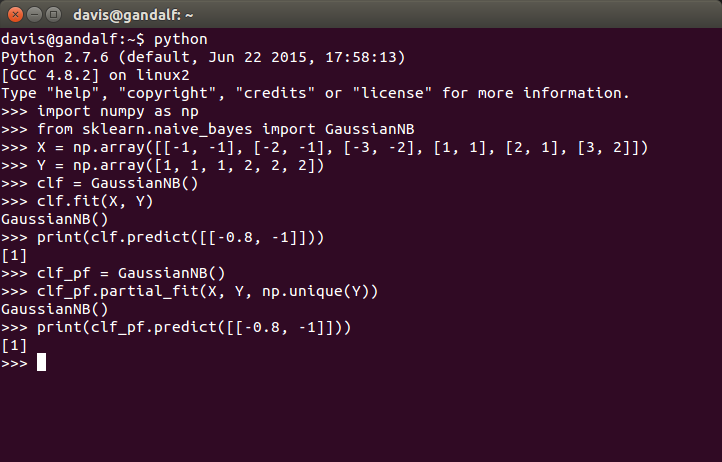As I work through the refresher on probability and information theory, the authors showcase Bayes’ Rule which is a key statistical technique applied to e-mail filtering.
We often find ourselves in a situation where we know and need to know . Fortunately, if we also know , we can compute the desired quantity using Bayes’ rule:
Note that while appears in the formula, it is usually feasible to compute
so we do not need to begin with knowledge of .
Excerpted from Chapter 3 of Deep Learning by Ian Goodfellow, Yoshua Bengio and Aaron Courville.
Example Code
Here’s an example of prediction with a Gaussian Naive Bayes algorithm using Python’s scikit-learn library:
import numpy as np
X = np.array([[-1, -1], [-2, -1], [-3, -2], [1, 1], [2, 1], [3, 2]])
Y = np.array([1, 1, 1, 2, 2, 2])
from sklearn.naive_bayes import GaussianNB
clf = GaussianNB()
print(clf.predict([[-0.8, -1]]))
clf_pf = GaussianNB()
clf_pf.partial_fit(X, Y, np.unique(Y))
print(clf_pf.predict([[-0.8, -1]]))
with output shown in this interactive session:
